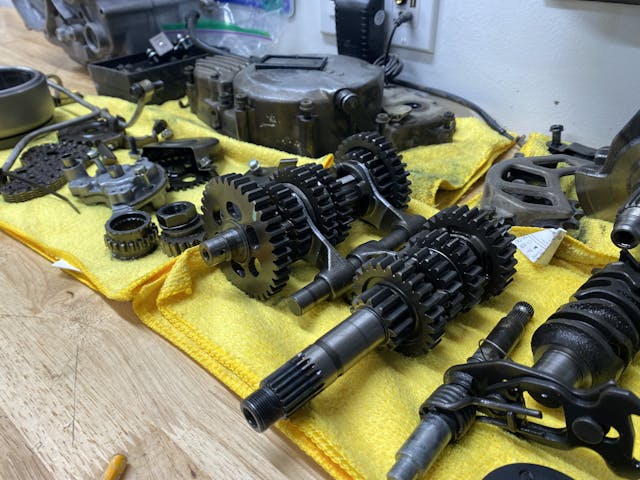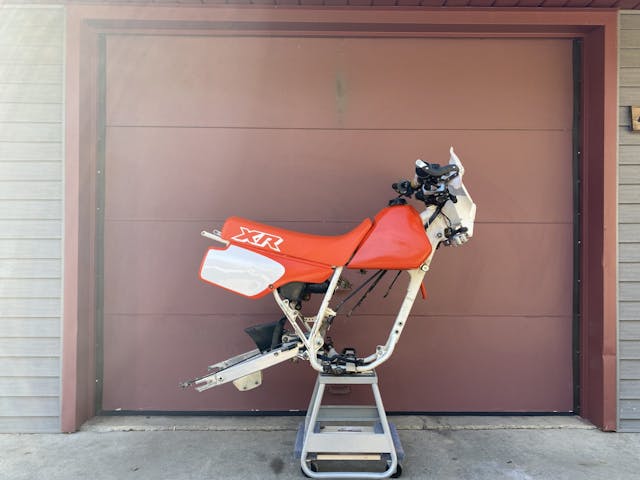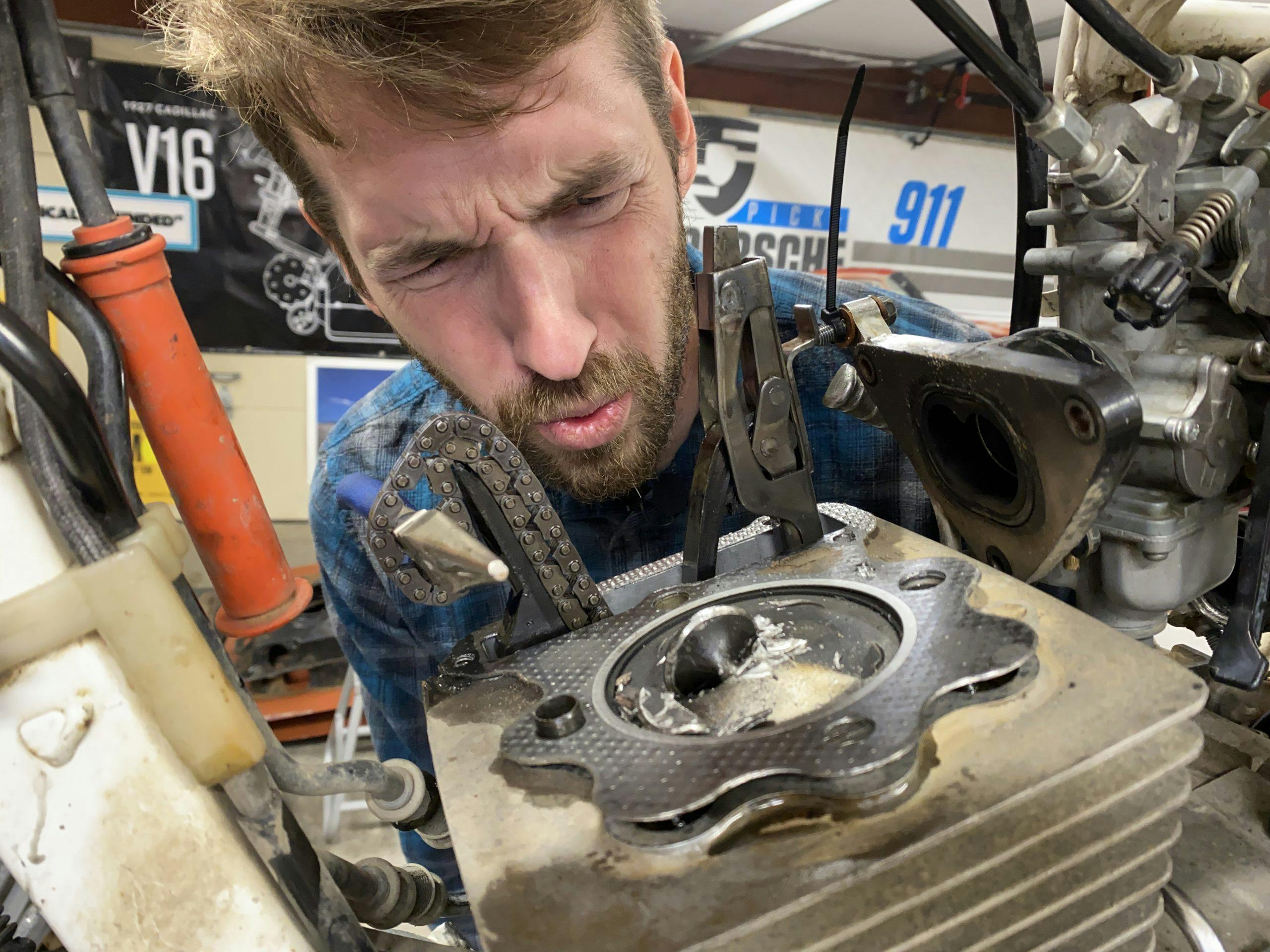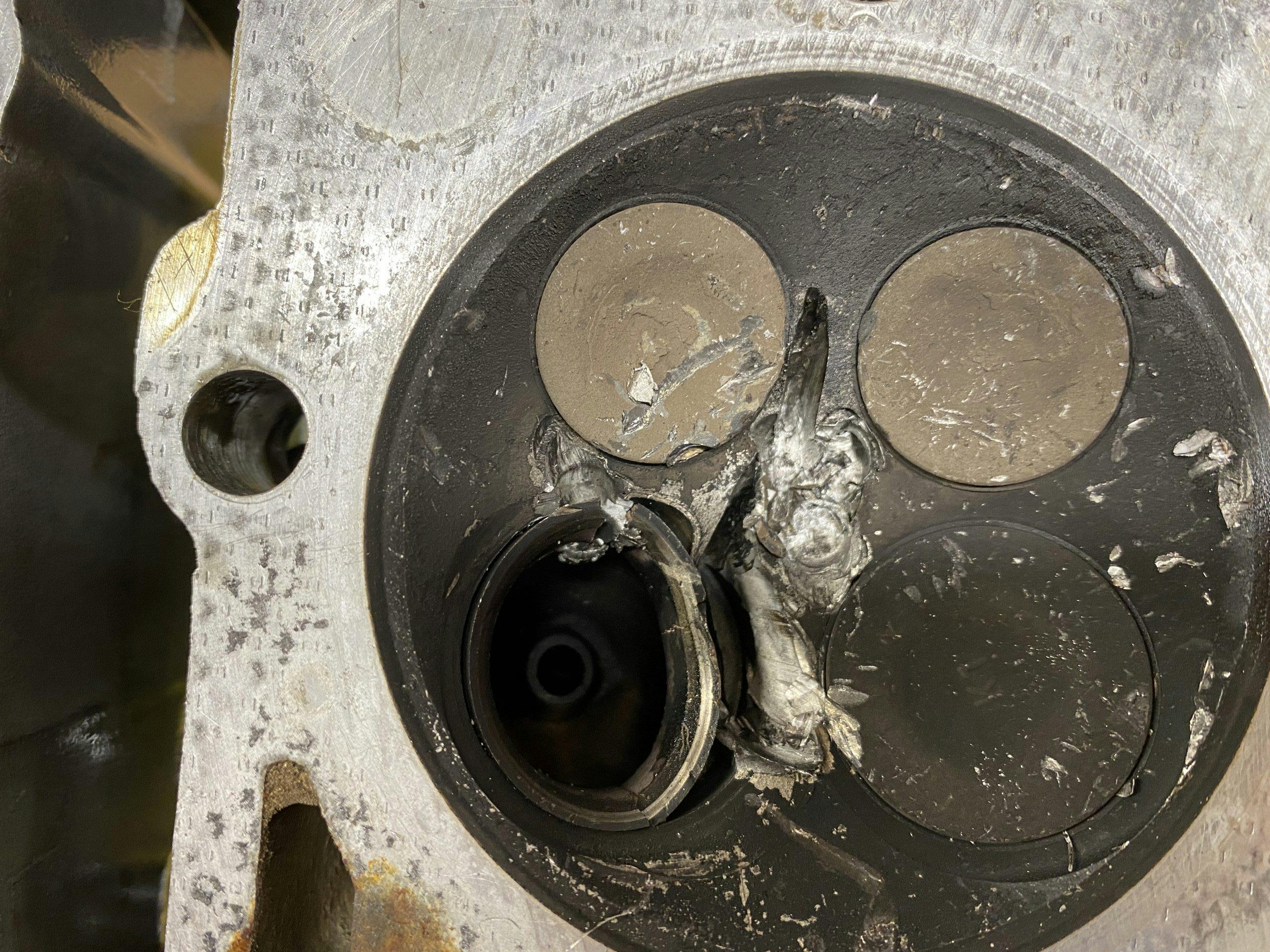There is no shame in calling in the experts
The whole schtick of my racing effort this year has convinced me that I will not truly be competitive in any of the six two-wheeled disciplines that I plan to tackle. Even so, I’m determined to bring the best-prepared combination of rider and machine to each starting line. If that’s the goal, I have to admit my deficiencies and pick up the phone. It also means a significant lull in the project’s progress.
It feels like forever ago that the skeleton of the Honda XR250R was sitting on my workbench. That steel frame revealed itself crack- and damage-free, so my attention turned to reassembly. Of course, there were two options for putting this machine back together:
- Clean and inspect the stock stuff and bolt it back on. Replace only what is needed.
- Clean and inspect, but implement carefully selected upgrades during reassembly.
It should be obvious that I took the second route. I am spending the rest of 2021 taking this knife into gunfights and I at least want that knife to be sharp. When you’re racing the rulebook, as I am, you must select parts carefully and intelligently. Which is why I didn’t do it—I called the experts.
The lowest-hanging fruit on the XR250R—when you’re looking to wring extra performance out of this model—is the suspension. The antiquated damper-rod forks are acceptable for puttering the sandy trails of Northern Michigan, but better suspension control is something that all performance riders agree is a big level-up. That’s why I called Race Tech Suspension in California, packaged up my forks and shock, slapped on a USPS label, and told them to have at it.

Sure, I could rebuild the suspension at home. Done it before, will do it again. However, an expert’s touch in the setup for this project is worth it. The plan currently is to install Race Tech’s gold valve cartridge emulators while replacing all the bushings and seals. These emulators take the fixed-orifice damping of the damper rod forks and upgrade it to a more modern shim stack that is tunable and allows me to better set the behavior of the suspension for the each event. I’ll dive deeper into tuning and setup when I have my fork and shock back and am bolting everything back on.
Besides the trick parts, the Race Tech service team has another thing I do not: the tools to do the job correctly. My credit card could support buying the special tools required to properly rebuild a rear shock, but considering how often I take on that task, the investment hardly makes sense. Race Tech isn’t the only team of experts I’ve pressed into service for this project, though.
We’ll need to review a little of the XR’s history here. The last time this bike ran, it ingested an intake valve under acceleration. That round disc turned the combustion chamber of the soft aluminum cylinder head into something just shy of abstract art. My local machine shop offered to hang it on the wall, but had no way of bringing it back to life. In the intro to this project I discussed a parts bike engine that sits in the corner of my shop. I bought that bike from a guy who said the guy he bought it from heard it run … once. So here I am faced with the decision to get that engine running and just go with it, or buy up some parts and rebuild the thoroughly tenderized single-cylinder on the bench.
There was also a third option, and it’s the one I chose. The XR250R cylinder head is NLA and when a usable one pops up for sale, it sells quickly and isn’t cheap. A company over in Wisconsin boasted that they could take my scrap metal and make it new again. That I had to see. Millennium Technologies now has my cylinder head in its machine shop, along with the crankshaft and cylinder from the engine. MT’s shop is fully equipped to reconstruct the head by welding it together and using a CNC machine to cut it down to shape before pressing in new valve seats. It will also bore the cylinder to match a new piston as well as rebuild the pressed-together crankshaft and connecting rod. What I’ll be getting back will be parts I can trust as I sit atop the bike at wide-open throttle at least six times this year.
There is no shame in calling in the experts. Doing everything at home has its merits and is super cool, but some tasks are best left for the pros. While Race Tech and Millennium Technologies are hammering away on their specialized tasks, I am catching up by cleaning parts, pressing new bearings into wheels and pivots, and getting all my ducks in a row so that when these two major pieces of the motorcycle return, I will be ready to march forward quickly.

It’s looking like I will have only a few weeks between receiving the freshly machined engine bits and the first event in May. The rest of the engine is going to be clean and ready for assembly when they arrive, and hopefully I’ll be able to get in some test miles. For now, I’m crossing my fingers that the aforementioned timeline is accurate, but I’m satisfied that, whatever happens, I’ll be assembling the best parts into my race machine.





